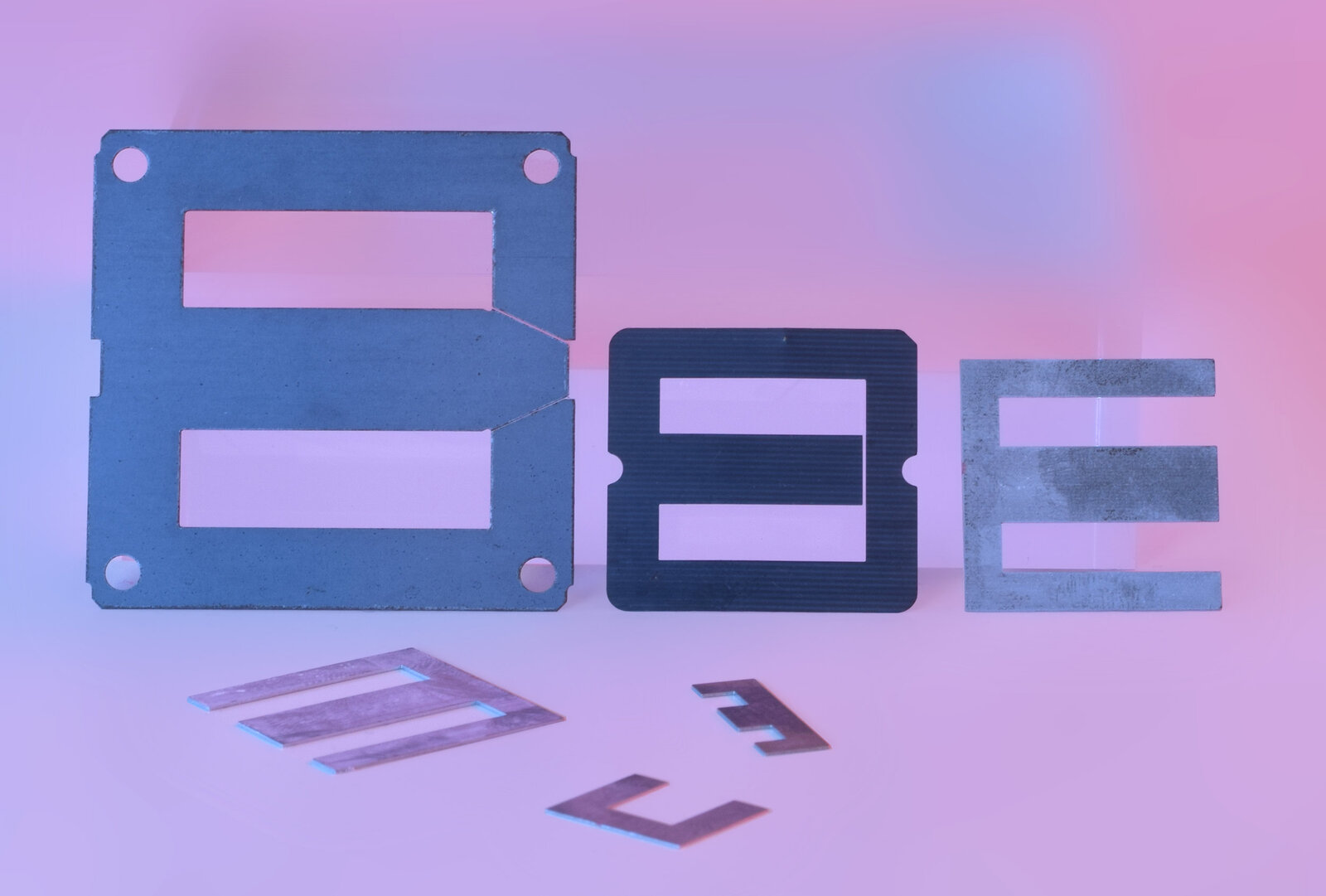Forms of Supply Laminations

Standard laminations are described in DIN EN 61021 in a variety of sizes and grades. They are stamped from a pre-material strip of the respective thickness and finished by a consequent annealing process to optimize the magnetic properties. A thin oxide layer which has build up during the annealing process is typically sufficient as interlayer isolation. Especially with thin laminations careful handling is required in order to not reduce or destroy the magnetic properties by elastic or plastic deformation.
Usually laminations are stacked in alternating directions in order to reduce the effective air gap. The possible effective permeability depends, besides from the alloy of course, from the size and shape of the laminations, which both influence the ratio between the mean magnetic path length and the effective air gap (shearing). ED and U laminations exhibit the lowest shearing effect and allow the highest permeability values. In combination with the high permeability alloys MUMETALL® or VACOPERM® they are especially suitable for chokes or transformers which need a high inductivity.